Events
| Name | organizer | Where |
|---|---|---|
| MBCC “Doing Business with Mongolia seminar and Christmas Receptiom” Dec 10. 2025 London UK | MBCCI | London UK Goodman LLC |
NEWS
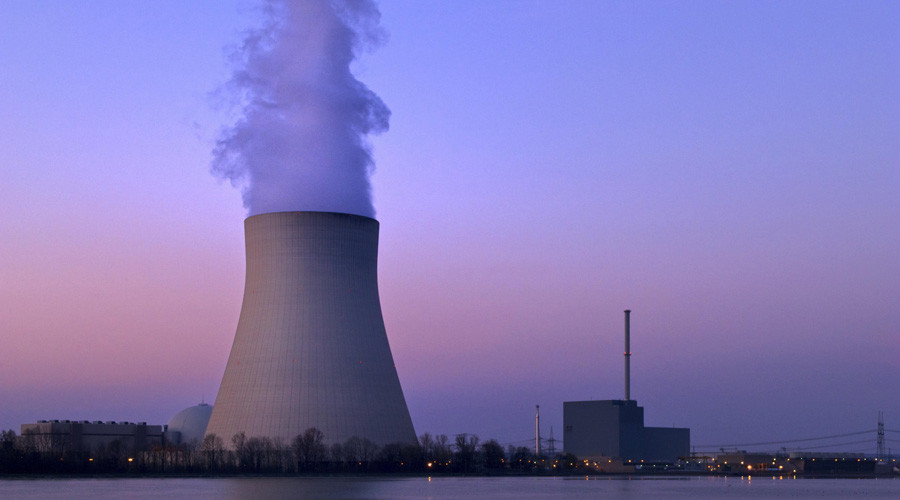
Russia Proposes Nuclear Power Plant & Uranium Mining Projects For Mongolia www.russiaspivottoasia.com
Mongolia is considering Rosatom’s proposal to build a small nuclear power plant, according to Alexey Evsikov, the Russian Ambassador to Mongolia. At present, Ulaanbaatar, the capital city, is powered by two Soviet-era coal-powered plants, which are both archaic and highly polluting during the winter months. The Mongolian energy system is also under enormous strain even at minimal loads.
Mongolia’s power grid is currently experiencing serious problems. Voltage levels at control points reach maximum permissible levels at night, even at minimum load. Ulaanbaatar also intends to reduce its dependence on imports—20% of its electricity is still supplied from Russia and China. A nuclear power plant would ensure the country’s clean energy stability.
Mongolia is also selecting a site for the facility, Evsikov said, adding that “Since August 2024, the Mongolian side has been reviewing a proposal from Rosatom to build a small nuclear power plant using cutting-edge, unparalleled technology. The facility is expected to be located in a region where a large number of new electricity consumers are expected to emerge.” That suggests it could be built in New Kharkhorum, the proposed new capital city being constructed about 230 km southwest of Ulaan Baatar. This in turn suggests that Ulaanbaatar’s needs will be met by the Power of Siberia 2 gas pipeline that will bisect Mongolia en route to China from Russia.
On September 2, 2025, a legally binding memorandum was signed on the construction of the Power of Siberia 2 gas pipeline and the Soyuz Vostok transit gas pipeline. The project will enable the annual supply of 50 billion cubic meters of gas from Russia to China via Mongolia. Mongolian Prime Minister Gombojavyn Zandanshatar called it the grand project of the millennium.
As concerns the proposed NPP, in September 2024, Rosatom stated that the technical design of the project to build Mongolia’s first small nuclear power plant was finalized. It was reported that the agreement could be signed during 2025. However, there have been no updates on this timeline, suggesting there has been some slippage.
The future nuclear power plant is crucial for ensuring Mongolia’s energy stability, according to Daria Saprynskaya, a research fellow at the Laboratory for Modern Central Asia and the Caucasus Studies at the Institute of Oriental Studies of the Russian Academy of Sciences. She has said that “Currently, gasification and coal play a vital role in ensuring Mongolia’s stability and security. A new nuclear power plant could potentially provide a sustainable source of electricity to replace coal-fired power plants, which is especially important for the development of large cities and industrial projects. For example, a small nuclear power plant project is being considered to supply electricity to New Kharkhorum.”
However, there is a financial aspect to this. The question is whether the country’s budget can afford to build a nuclear power plant, as the project is expensive. Nevertheless, Mongolia’s interest is clear. Previously, the Deputy Speaker of the Mongolian Parliament, Bekhchuluun Purevdorj, emphasized that if work on nuclear power plant construction begins now, the country will resolve its nuclear energy problem within 10-15 years.
Meanwhile, Evsikov has said that other Russia-Mongolia joint venture projects are being discussed, including uranium and rare earth element mining. He added that “Cooperation in the energy sector is a strategic area for Russia and Mongolia, as this is playing an increasingly important role in ensuring sustainable economic development.”
Bilateral relations between Moscow and Ulaanbaatar are experiencing a new wave of development. In early December, the first Russian / Mongolian Regional Forum took place. A cooperation program for 2026–2030, covering approximately 70 areas, was signed.
Russian Deputy Prime Minister Alexey Overchuk stated at the forum that Ulaanbaatar remains an important trading partner in Asia, as evidenced by the growing trade turnover. He stated that it increased by 17.8% in 2024 and by another 5% in the first nine months of 2025. Bilateral trade is approaching the US$2 billion mark, up from US$1.4 billion in 2020. Now, the two sides have the opportunity to further increase these figures, as trade cooperation has been boosted by Mongolia signing a Free Trade Agreement with the Eurasian Economic Union (EAEU). This agreement provides for the trade liberalization for 367 types of goods. Trade services are also being improved. For example, in October 2024, the Kyakhta customs and logistics terminal opened on the Russian-Mongolian border, simplifying trade flows and increasing throughput.
Overchuk said, “We see potential in increasing imports of Mongolia’s traditional goods—wool, cashmere, leather, and meat.” Mongolia exports meat, wool, and textiles, as well as substantial mineral reserves: gold, silver, iron ore, coal, copper, tin, nickel, and zinc. Upmarket Mongolian cashmere stores are now appearing in Russian shopping malls.
Mongolia mainly imports petroleum products, cars, buses and other transport vehicles and equipment, electrical equipment, metal products, food products, and pharmaceuticals from Russia.
Saprynskaya adds that water is an interesting area for cooperation between Russia and Mongolia, with Mongolian authorities previously proposing cooperation with Russia on the future construction of the Egiin-Gol hydroelectric power station project on the Selenga River, a tributary of Lake Baikal. The two sides are also focusing on the mutual preservation of large bodies of water.
Political dialogue is also currently on the rise. On September 2, 2025, Russian President Vladimir Putin met with Chinese President Xi Jinping and Mongolian President Ukhnaagiin Khurelsukh in Beijing. A year earlier, in September 2024, the Russian leader paid an official visit to the country. Following Vladimir Putin’s invitation, the Mongolian president also traveled to Moscow to participate in the 80th anniversary celebrations of Victory Day in May 2025.
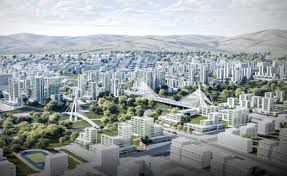
Hunnu City as an Urban Constellation for Mongolia’s 2050 Vision www.parametric-architecture.com
Bechu & Associés has emerged as the winner of the international open competition to shape the master plan for Hunnu City, a visionary new urban district south of Ulaanbaatar, Mongolia. Announced in 2025, the proposal sets out a long-term framework for a vast 31,503-hectare site near Chinggis Khaan International Airport, with development unfolding in carefully planned phases through 2045. Rooted in Mongolia’s ambitious Vision 2050 agenda, designed as a future urban city at the center of national priorities, supporting economic independence, strengthening climate resilience, and celebrating cultural identity.
Hunnu City is imagined as a regenerative urban masterplan, where infrastructure, landscape, housing, and community life evolve together in a renewed harmony between nature, society, and architectural innovation. From the initiation of the design process, the architecture rejects rigid, imposed geometry, instead allowing the land itself to shape the city, drawing cues from the open steppe, prevailing winds, water systems, and natural cycles to create a place that grows organically from its environment.
Hunnu City is imagined as a living urban system that listens to its surroundings and grows in harmony with natural and human flows. The design weaves together water reuse, renewable energy, ecological corridors, and smooth mobility to create a walkable, human-centered 15-minute city. Rooted in Mongolian traditions, the master plan draws inspiration from the sacred symbolism of the number nine. This idea is translated into the master plan as nine guiding pillars that frame the city’s vision. The pillars, including nature, heritage, resilience, and time, shape the city designed to evolve thoughtfully across generations.
At the heart of the master plan lies the idea of Amid Od, or “stars of life,” shaping the city as a modern constellation. These circular centers, inspired by the traditional Mongolian ger, serve as powerful identity anchors for future generations as well as cultural, social, energy, and food hubs. Organized through cellular planning, the city unfolds in living layers around density, activity, and programs around the Amid Od, then spreads out into gardens, productive landscapes, and open steppe. This gradual transition allows urban life and nature to merge seamlessly, creating a city that feels both grounded in tradition and open to the future.
Hunnu City as an Urban Constellation for Mongolia’s 2050 Future
Designed as climatic biomes with lightweight, adaptable envelopes, the buildings ensure comfort in Mongolia’s extreme climate. Passive solar strategies, heat recovery, and rainwater harvesting help balance harsh winters and hot summers. At the urban scale, ecological corridors, no-build zones, and water-sensitive landscapes mitigate wind, flooding, and hydrological risks. Resilience and circularity are embedded through near-zero energy urban cells, passively survivable buildings, and locally sourced, demountable materials. These systems are unified by intelligent smart-grid networks that optimize energy and resource use across the city.
Hunnu City as an Urban Constellation for Mongolia’s 2050 Future
The city’s urban architecture places food and soil at its core, treating food security as a foundation of true sovereignty. Regenerative farming, short supply chains, living soils, and circular water systems create a closed-loop cycle where water nourishes the land, the land produces food, and waste is transformed into energy, compost, and animal feed. This approach supports both settled communities and nomadic traditions, ensuring resources are locally sustained. The system strengthens the connection between human well-being, ecological health, and long-term prosperity.
Hunnu City as an Urban Constellation for Mongolia’s 2050 Future
The design unfolds as a living ecosystem where nature, culture, and people evolve together. By blending environmental intelligence with cultural identity, the vision moves beyond conventional urbanism and emerges as a forward-looking urban model that is sustainable and culture-driven.

Mongolia's central bank purchases 16.3 tons of gold in 2025 www.xinhuanet.com
Mongolia's central bank purchased 16.3 tons of gold from legal entities and individuals in 2025, marking a 0.7 percent decrease compared to last year, according to the Bank of Mongolia on Friday.
As of December 2025, the Bank of Mongolia's average gold purchase price stood at 490,374.67 Mongolian tugriks (about 137.8 U.S. dollars) per gram, the bank said in a statement.
Purchasing gold is one of the key ways for the central bank to ensure the country's economic stability by consistently increasing foreign currency reserves, it added.
According to the central bank, Mongolia's foreign exchange reserves totalled 7 billion U.S. dollars at the end of December 2025.

Mongolia's forex reserves reach record high in 2025 www.xinhuanet.com
Mongolia's foreign exchange reserves hit a record high of 7 billion U.S. dollars by the end of 2025, according to official data released by the country's central bank on Friday.
The figure represents a 27.14 percent increase compared to the previous year, the Bank of Mongolia said in a statement.
The central bank expects to increase the country's foreign exchange reserves to 10 billion dollars in the long term.
According to the regulator, Mongolia's foreign exchange reserves stood at 5.5 billion dollars by the end of December 2024.

Mongolia Leads World Rankings in Memory, Mind Sports www.montsame.mn
Mongolian mind sports athletes have taken the lead globally. Specifically, Mongolia ranked first among the top five countries based on team scores earned during the 2025 World Championships.
The Mongolian team has competed in the world championships for 15 years and has been crowned world champion seven times, cementing its position as a leader on the international stage.
At the World Championship, the final event of 2025, the national team, comprising 37 athletes, claimed a total of 66 medals - 27 gold, 21 silver, and 22 bronze - out of a possible 90 medals. Additionally, the team secured 10 cups, demonstrating absolute dominance in the overall team standings. With this success, Mongolia leads the world's top five countries, followed by Australia, China, Vietnam, and Algeria.
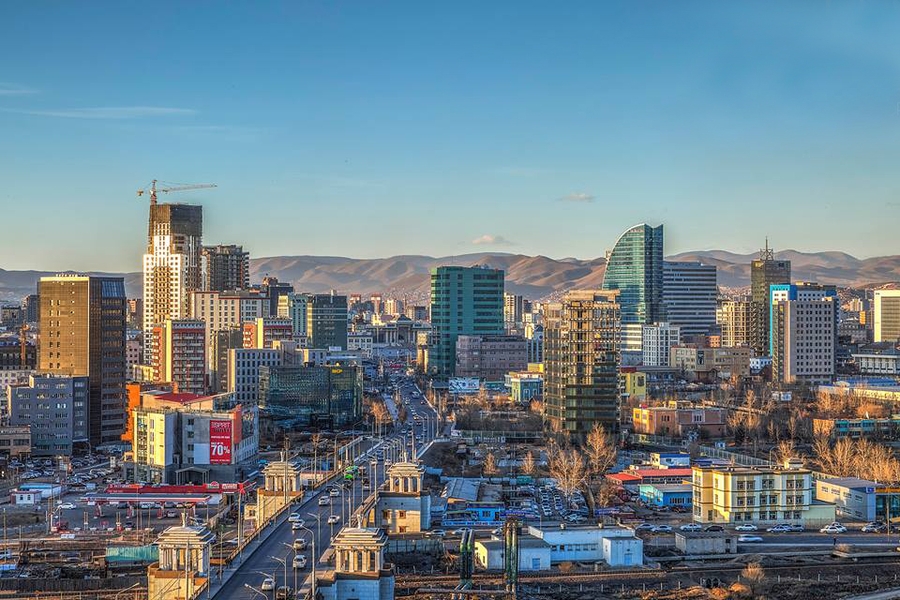
Mongolia extends visa exemption policy for 34 countries by one year www.visasnews.com
Good news for international travelers: Mongolia has officially announced the extension of its visa-free entry policy for citizens of 34 countries through January 1, 2027. Originally introduced as a temporary measure in 2023 and set to expire on December 31, 2025, the program has now been renewed, reaffirming the Mongolian government’s commitment to maintaining an open and tourism-friendly policy.
After several weeks of uncertainty and speculation, Mongolia has officially made its decision… at the last minute.
Mongolian authorities confirmed today the extension of the visa exemption for nationals of 34 countries until January 1, 2027, a measure initially introduced in 2023 on a temporary basis.
In a statement released on Wednesday, December 31, the Embassy of Mongolia in France announced that “the Mongolian government will temporarily exempt (until January 1, 2027) citizens of 34 countries, including French, Spanish, Portuguese, and Monegasque nationals holding ordinary passports, from the visa requirement for tourist stays of up to 30 days.”
Highly anticipated by travelers and tourism professionals alike, this decision puts an end to concerns about a possible reinstatement of visa requirements in 2026 and reaffirms the country’s intention to continue promoting international tourism.
Mongolia: Who can enter without a visa in 2026?
The extension confirms that the original list of eligible countries remains unchanged.
In 2026, citizens of the following 34 countries and territories will continue to be able to travel to Mongolia visa-free for tourism stays of up to 30 days:
Australia, Austria, Belgium, Bulgaria, Croatia, Cyprus, Czech Republic, Denmark, Estonia, Finland, France, Greece, Hungary, Iceland, Ireland, Italy, Latvia, Liechtenstein, Lithuania, Luxembourg, Malta, Monaco, Netherlands, New Zealand, Norway, Poland, Portugal, Romania, Slovakia, Slovenia, Spain, Sweden, Switzerland, and the United Kingdom.
As part of the “Visit Mongolia Year” program, Mongolian authorities also confirmed the extension of visa-free entry for South Korean nationals, allowing tourist stays of up to 90 days. This exemption is now valid through December 31, 2026.
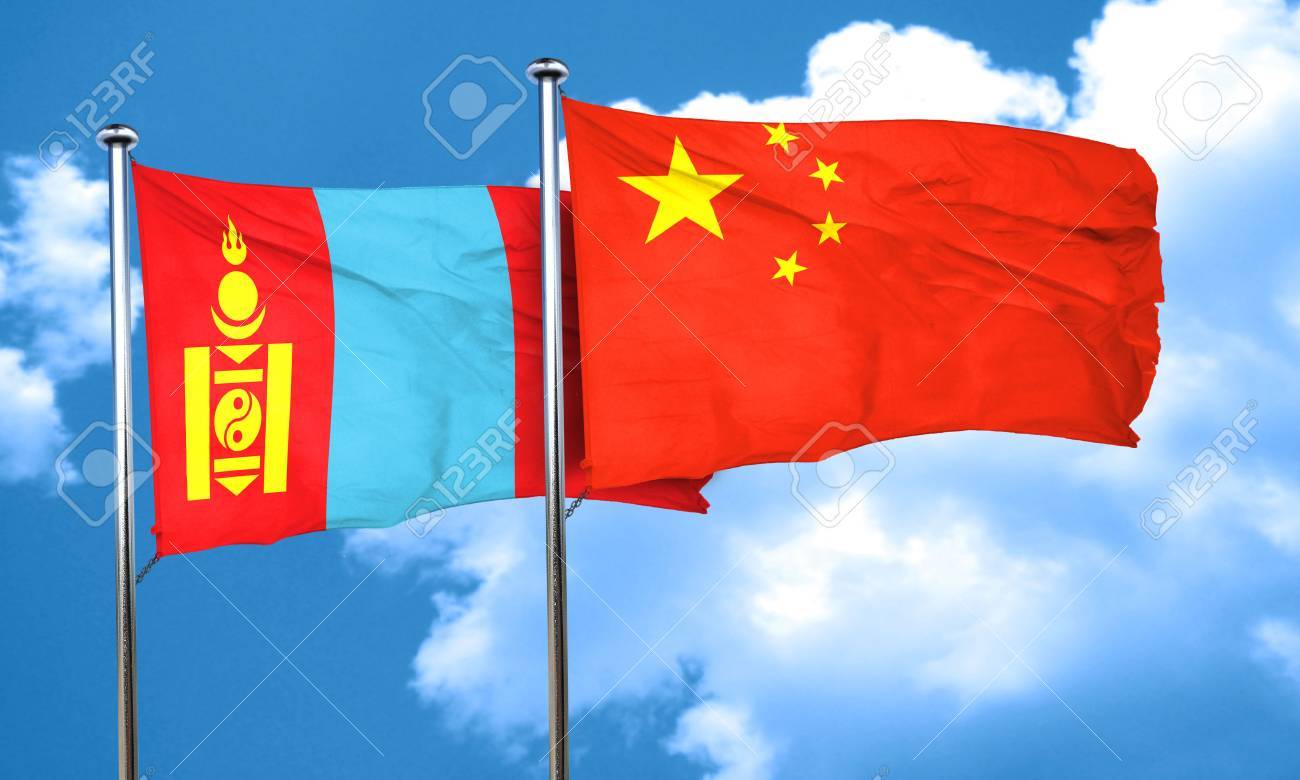
Mongolia and China have erected more than 4.700 kilometers of border fences to contain livestock, curb pasture degradation, and transform the grassland into a permanent ecological border of territorial sovereignty www.en.clickpetroleoegas.com.br
Mongolia–China Border Livestock FenceMongolia and China have surrounded almost the entire border to contain livestock, protect pastures, and transform land use into a strategic issue of sovereignty.
For centuries, the border between Mongolia and China was marked by open fields, free-roaming herds, and a pastoral economy that ignored lines on the map. This scenario began to change radically when advancing environmental degradation, pressure on pastures, and recurring rural conflicts led the two countries to adopt a direct and physical solution: one of the largest continuous fences on the planet, extending over 4.700 kilometers along the border.
What was once just an ecological transition zone has transformed into a rigid artificial borderwhere pasture began to be treated as a strategic asset.
The problem that didn't respect borders.
The basis of the rural economy in Mongolia has always been extensive pastoralism. Herds of goats, sheep, horses, and yaks travel great distances in search of food, following the natural cycle of the seasons. On the Chinese side, however, the agricultural model is more intensive, with strict control of land use and environmental policies aimed at curbing desertification.
With the increase in the number of animals and the reduction in the regenerative capacity of pastures, the free movement of herds came to be seen as an environmental and economic threat. Overburdened areas began to lose vegetation cover, accelerating erosion and the advance of the Gobi Desert.
Fences as a territorial solution
The answer found was simple, but of monumental scale: surround the borderThe call Mongolia–China Border Livestock Fence It was not designed as a symbolic barrier, but as a continuous physical line capable of preventing the movement of animals between the two countries.
Along almost the entire land border, the fence has come to function as an ecological divider, separating completely distinct land-use systems. On one side, nomadic pastoralism; on the other, areas subject to strict conservation and environmental control policies.
Over 4.700 km of animal containment
The fence extends along virtually the entire border between Mongolia and China, which totals approximately 4.710 kilometers. In many sections, it is a permanent barrier, maintained and monitored, with a clear function: to contain herds and limit the shared use of pastures..
This scale transforms the project into something much larger than a simple rural fence. It is a territorial infrastructure that reshapes ecological and economic flows on a continental level.
Pastures as a strategic asset
With the fence, the pasture ceased to be merely a natural resource and began to be treated as... question of sovereigntyControlling where animals can and cannot roam means controlling the pressure on the soil, food production, and the stability of rural communities.
For China, the barrier is also connected to broader policies to combat desertification, which include reforestation, restrictions on grazing, and the creation of environmental exclusion zones. For Mongolia, it represents a profound break with the tradition of free movement of livestock.
Social and cultural impacts
The construction of the fence did not occur without consequences. Nomadic communities, accustomed to traversing long distances, began to face unprecedented physical limitations. Traditional routes were interrupted, and adapting to a compartmentalized territory required changes in their pastoral way of life.
At the same time, the barrier reduced local disputes over pastures and decreased cross-border conflicts related to land use.
Unlike fences built solely for political or military reasons, this structure functions as a artificial ecological boundaryIt separates biomes, regulates animal pressure, and creates two distinct environmental systems from the same natural landscape.
This type of solution reveals how, in certain regions, the simplest engineering—a continuous fence—can have profound and lasting effects on the environment.
From a technical standpoint, the fence doesn't involve sophisticated materials or complex construction. Its strength lies in its length, continuity, and strategic function. Once installed, it shapes human behavior, animal movements, and public policies for decades.
It's the same principle seen in projects like the Dingo Fence in Australia: Linear infrastructure used to contain diffuse problems..
When territory becomes an instrument of control.
The case of the border between Mongolia and China shows how environmental challenges can lead countries to transform entire landscapes into containment systems. The pasture, once a shared and fluid resource, has become a rigid line on the map.
By erecting more than 4.700 kilometers of fences, the two countries made it clear that, in a world pressured by limited resources, even grass can become a matter of national sovereignty.

China Tightens Export Controls on Silver, Steel, Antimony www.chosun.com
China implemented stringent export control policies on silver, iron, antimony, and other critical materials essential to advanced technology industries on New Year’s Day. Silver, tungsten, and antimony will be managed by designating state-approved export companies every two years, while steel export standards have been significantly tightened by product category. This expansion of resource control—from rare earths to essential materials—reflects Beijing’s strategy amid the prolonged U.S.-China strategic competition over raw materials.
The Chinese Ministry of Commerce announced on the 30th of last month the list of companies permitted to export controlled minerals for 2026–2027. Fifteen companies for tungsten, 11 for antimony, and 44 for silver were approved, interpreted as a move to introduce a "two-year qualification review" targeting state-owned trading firms with large export volumes. To pass the review, companies must meet export performance, production capacity, and compliance requirements over the past two years. Silver, like gold, is both a safe-haven asset and a critical material for solar, electronics, and electric vehicles, making its supply-sensitive to price fluctuations. A source from the Securities Times, affiliated with the People’s Daily, stated, “The new silver export controls signify its official inclusion in the national strategic resource list,” adding, “Silver management is now at the same level as rare earths.”
On the same day, China reintroduced export permits for steel products after 16 years. The 300 managed steel items—covering raw materials and finished products—require a "quality inspection pass certificate" for export. A Beijing-based trade industry source analyzed, “While claiming to expand high-value steel exports, the Chinese government is tightening controls over global essential raw materials.” Industry insiders also noted that Beijing is stockpiling chromium and manganese, critical for special steel smelting, alongside export permit systems.
If rare earths were a preview of China’s "resource weaponization," the expanded controls on steel and other materials signal the main phase of its strategy, extending across the entire supply chain from raw minerals to intermediate and finished goods. This could allow Beijing to dominate the backbone of global supply chains.
By combining export permit systems and stockpiling instead of tariffs, China can minimize diplomatic friction while maximizing pressure on other nations. Analysts suggest Beijing swiftly tightened silver supply controls after the U.S. government officially added silver to its "critical minerals" list in November last year. Elon Musk, Tesla’s founder, criticized on X on the 27th of last month, “Silver is needed for many industrial processes. It’s not good.”
The South Korean government plans to analyze the impact of China’s permit system on domestic industries and supply chains. While silver imports (830 tons) are smaller than exports (3,116 tons), Hong Kong and China rank third and fourth in import sources, potentially affecting procurement. Short-term challenges may arise for industries like shipbuilding and automobiles in securing low-cost Chinese raw materials. A government official stated, “Some mid-sized and small companies processing imported Chinese steel may face supply disruptions or higher costs.”
Antimony, a byproduct of gold and silver refining, is vital for armor-piercing bullets, semiconductors, military electronics, and solar panels. China accounts for 41% of South Korea’s antimony imports, while the U.S. relies on China for over 60%. During President Lee Jae-myung’s visit to China on the 4th, strengthening supply chain cooperation was expected to be a key agenda.
Some posit that China’s controls could have partial positive effects. For instance, requiring quality certifications for steel exports might block low-quality Chinese steel, aligning with South Korea’s existing anti-dumping measures on Chinese steel plates, hot-rolled coils, and coated steel. For antimony, domestic firm Korea Zinc’s expanded exports to the U.S. last year may gain further momentum.
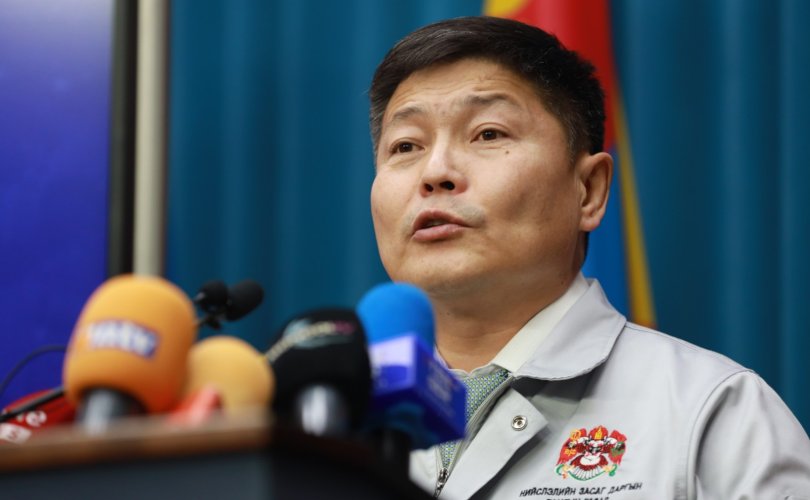
Mayor Reports on Construction Projects to be Implemented in 2026 www.montsame.mn
The Mayor of Ulaanbaatar and Governor of the Capital City, Nyambaatar Khishgee, provided information related to some mega projects in Ulaanbaatar city.
The mayor said, “As the start of the mega projects to be implemented in 2026, construction of the Tuul highway will begin on March 15. We are working on a tight schedule to open the roadway to traffic on July 1, 2027. As of today, preparations for the construction of the Tuul highway are 80 percent complete. Bids for the Ring Road construction will be opened on March 1. The second-stage tender of the Ulaanbaatar Metro Project was officially announced on December 24, 2025. The tender is scheduled to be opened on May 1, 2026.”
He also said, “This year, switching from briquetted fuel to semi-coke fuel generated savings of MNT 80 billion. Previously, fuel was produced from middlings with a subsidy of MNT 300 billion from Erdenes Tavantolgoi, whereas this year the expenditure on semi-coke fuel totaled MNT 220 billion. We are seeking solutions to build a semi-coke fuel plant that will rely on the Baganuur coal mine to avoid importing semi-coke fuel from abroad. With the Tuul highway and ring roads to be operational, traffic congestion is estimated to decrease by 50 percent. In efforts to reduce air pollution, the municipal office is working to switch to new fuel in the short term, gas and electric fuel in the mid-term, and housing in the long term. Within the framework of UNICEF’s CHIP Initiative, insulating and transitioning roughly 5,000 ger dwellings to gas fuel is planned to be completed by February 1, 2026.”
The municipal office also plans to implement seven energy projects in 2026, including the construction of the Thermal Power Plant-V, a 24 MW TPP in Emeelt Industrial Park, a TPP in Dambadarjaa, gas-fired power plants in Denjiin 1000 and Khan Hills, and a waste-to-energy plant.
In 2025, 1,436 unauthorized retail kiosks that occupied public areas and obstructed traffic were relocated, and the areas were cleared. In response, kiosk operators organized a protest. Nyambaatar said, “A meeting to negotiate with the kiosk operators will be held next week. Newly opened service centers at two locations in Ulaanbaatar will provide free space and workplaces for kiosk operators. The city hopes to relocate the more than 20 remaining kiosks through negotiation rather than enforcement, and five kiosk owners have already moved voluntarily.” He explained that the relocation is connected with the tram project scheduled to begin next year. The capital plans to announce the tender for the Tram Project on February 15 and open it in April 2026. Because the land clearing is required for this development, kiosks are being moved, and in some areas, the city will designate new locations for them.

AI Cameras Begin Detecting Traffic Violations, Issuing Fines www.montsame.mn
From January 1, 2026, traffic violations detected by artificial intelligence-based smart cameras are being enforced with fines.
Ulaanbaatar city has installed more than 2,600 cameras at 176 intersections and road crossings, enabling full AI-assisted traffic monitoring, a project launched last year. Starting January 1, information on violations detected by AI cameras is being sent to drivers with links and visual evidence, followed by the imposition of fines.
According to the Ulaanbaaar Traffic Control Center, all recordings of traffic violations are time-stamped to the minute and second, ensuring accuracy and minimizing errors. In the event of a dispute, drivers may submit complaints, which can be reviewed and resolved based on documented evidence.
The smart camera system detects and penalizes 10 types of violations, including:
· speeding
· running red lights
· improper use of the first lane
· incorrect lane positioning
· stopping at bus stops
· momentary speeding
· average speed violations
· crossing the “STOP” line
· temporary or prolonged illegal parking
· parking on sidewalks or green areas.
- 1
- 2
- 3
- 4
- 5
- 6
- 7
- 8
- 9
- 10
- 11
- 12
- 13
- 14
- 15
- 16
- 17
- 18
- 19
- 20
- 21
- 22
- 23
- 24
- 25
- 26
- 27
- 28
- 29
- 30
- 31
- 32
- 33
- 34
- 35
- 36
- 37
- 38
- 39
- 40
- 41
- 42
- 43
- 44
- 45
- 46
- 47
- 48
- 49
- 50
- 51
- 52
- 53
- 54
- 55
- 56
- 57
- 58
- 59
- 60
- 61
- 62
- 63
- 64
- 65
- 66
- 67
- 68
- 69
- 70
- 71
- 72
- 73
- 74
- 75
- 76
- 77
- 78
- 79
- 80
- 81
- 82
- 83
- 84
- 85
- 86
- 87
- 88
- 89
- 90
- 91
- 92
- 93
- 94
- 95
- 96
- 97
- 98
- 99
- 100
- 101
- 102
- 103
- 104
- 105
- 106
- 107
- 108
- 109
- 110
- 111
- 112
- 113
- 114
- 115
- 116
- 117
- 118
- 119
- 120
- 121
- 122
- 123
- 124
- 125
- 126
- 127
- 128
- 129
- 130
- 131
- 132
- 133
- 134
- 135
- 136
- 137
- 138
- 139
- 140
- 141
- 142
- 143
- 144
- 145
- 146
- 147
- 148
- 149
- 150
- 151
- 152
- 153
- 154
- 155
- 156
- 157
- 158
- 159
- 160
- 161
- 162
- 163
- 164
- 165
- 166
- 167
- 168
- 169
- 170
- 171
- 172
- 173
- 174
- 175
- 176
- 177
- 178
- 179
- 180
- 181
- 182
- 183
- 184
- 185
- 186
- 187
- 188
- 189
- 190
- 191
- 192
- 193
- 194
- 195
- 196
- 197
- 198
- 199
- 200
- 201
- 202
- 203
- 204
- 205
- 206
- 207
- 208
- 209
- 210
- 211
- 212
- 213
- 214
- 215
- 216
- 217
- 218
- 219
- 220
- 221
- 222
- 223
- 224
- 225
- 226
- 227
- 228
- 229
- 230
- 231
- 232
- 233
- 234
- 235
- 236
- 237
- 238
- 239
- 240
- 241
- 242
- 243
- 244
- 245
- 246
- 247
- 248
- 249
- 250
- 251
- 252
- 253
- 254
- 255
- 256
- 257
- 258
- 259
- 260
- 261
- 262
- 263
- 264
- 265
- 266
- 267
- 268
- 269
- 270
- 271
- 272
- 273
- 274
- 275
- 276
- 277
- 278
- 279
- 280
- 281
- 282
- 283
- 284
- 285
- 286
- 287
- 288
- 289
- 290
- 291
- 292
- 293
- 294
- 295
- 296
- 297
- 298
- 299
- 300
- 301
- 302
- 303
- 304
- 305
- 306
- 307
- 308
- 309
- 310
- 311
- 312
- 313
- 314
- 315
- 316
- 317
- 318
- 319
- 320
- 321
- 322
- 323
- 324
- 325
- 326
- 327
- 328
- 329
- 330
- 331
- 332
- 333
- 334
- 335
- 336
- 337
- 338
- 339
- 340
- 341
- 342
- 343
- 344
- 345
- 346
- 347
- 348
- 349
- 350
- 351
- 352
- 353
- 354
- 355
- 356
- 357
- 358
- 359
- 360
- 361
- 362
- 363
- 364
- 365
- 366
- 367
- 368
- 369
- 370
- 371
- 372
- 373
- 374
- 375
- 376
- 377
- 378
- 379
- 380
- 381
- 382
- 383
- 384
- 385
- 386
- 387
- 388
- 389
- 390
- 391
- 392
- 393
- 394
- 395
- 396
- 397
- 398
- 399
- 400
- 401
- 402
- 403
- 404
- 405
- 406
- 407
- 408
- 409
- 410
- 411
- 412
- 413
- 414
- 415
- 416
- 417
- 418
- 419
- 420
- 421
- 422
- 423
- 424
- 425
- 426
- 427
- 428
- 429
- 430
- 431
- 432
- 433
- 434
- 435
- 436
- 437
- 438
- 439
- 440
- 441
- 442
- 443
- 444
- 445
- 446
- 447
- 448
- 449
- 450
- 451
- 452
- 453
- 454
- 455
- 456
- 457
- 458
- 459
- 460
- 461
- 462
- 463
- 464
- 465
- 466
- 467
- 468
- 469
- 470
- 471
- 472
- 473
- 474
- 475
- 476
- 477
- 478
- 479
- 480
- 481
- 482
- 483
- 484
- 485
- 486
- 487
- 488
- 489
- 490
- 491
- 492
- 493
- 494
- 495
- 496
- 497
- 498
- 499
- 500
- 501
- 502
- 503
- 504
- 505
- 506
- 507
- 508
- 509
- 510
- 511
- 512
- 513
- 514
- 515
- 516
- 517
- 518
- 519
- 520
- 521
- 522
- 523
- 524
- 525
- 526
- 527
- 528
- 529
- 530
- 531
- 532
- 533
- 534
- 535
- 536
- 537
- 538
- 539
- 540
- 541
- 542
- 543
- 544
- 545
- 546
- 547
- 548
- 549
- 550
- 551
- 552
- 553
- 554
- 555
- 556
- 557
- 558
- 559
- 560
- 561
- 562
- 563
- 564
- 565
- 566
- 567
- 568
- 569
- 570
- 571
- 572
- 573
- 574
- 575
- 576
- 577
- 578
- 579
- 580
- 581
- 582
- 583
- 584
- 585
- 586
- 587
- 588
- 589
- 590
- 591
- 592
- 593
- 594
- 595
- 596
- 597
- 598
- 599
- 600
- 601
- 602
- 603
- 604
- 605
- 606
- 607
- 608
- 609
- 610
- 611
- 612
- 613
- 614
- 615
- 616
- 617
- 618
- 619
- 620
- 621
- 622
- 623
- 624
- 625
- 626
- 627
- 628
- 629
- 630
- 631
- 632
- 633
- 634
- 635
- 636
- 637
- 638
- 639
- 640
- 641
- 642
- 643
- 644
- 645
- 646
- 647
- 648
- 649
- 650
- 651
- 652
- 653
- 654
- 655
- 656
- 657
- 658
- 659
- 660
- 661
- 662
- 663
- 664
- 665
- 666
- 667
- 668
- 669
- 670
- 671
- 672
- 673
- 674
- 675
- 676
- 677
- 678
- 679
- 680
- 681
- 682
- 683
- 684
- 685
- 686
- 687
- 688
- 689
- 690
- 691
- 692
- 693
- 694
- 695
- 696
- 697
- 698
- 699
- 700
- 701
- 702
- 703
- 704
- 705
- 706
- 707
- 708
- 709
- 710
- 711
- 712
- 713
- 714
- 715
- 716
- 717
- 718
- 719
- 720
- 721
- 722
- 723
- 724
- 725
- 726
- 727
- 728
- 729
- 730
- 731
- 732
- 733
- 734
- 735
- 736
- 737
- 738
- 739
- 740
- 741
- 742
- 743
- 744
- 745
- 746
- 747
- 748
- 749
- 750
- 751
- 752
- 753
- 754
- 755
- 756
- 757
- 758
- 759
- 760
- 761
- 762
- 763
- 764
- 765
- 766
- 767
- 768
- 769
- 770
- 771
- 772
- 773
- 774
- 775
- 776
- 777
- 778
- 779
- 780
- 781
- 782
- 783
- 784
- 785
- 786
- 787
- 788
- 789
- 790
- 791
- 792
- 793
- 794
- 795
- 796
- 797
- 798
- 799
- 800
- 801
- 802
- 803
- 804
- 805
- 806
- 807
- 808
- 809
- 810
- 811
- 812
- 813
- 814
- 815
- 816
- 817
- 818
- 819
- 820
- 821
- 822
- 823
- 824
- 825
- 826
- 827
- 828
- 829
- 830
- 831
- 832
- 833
- 834
- 835
- 836
- 837
- 838
- 839
- 840
- 841
- 842
- 843
- 844
- 845
- 846
- 847
- 848
- 849
- 850
- 851
- 852
- 853
- 854
- 855
- 856
- 857
- 858
- 859
- 860
- 861
- 862
- 863
- 864
- 865
- 866
- 867
- 868
- 869
- 870
- 871
- 872
- 873
- 874
- 875
- 876
- 877
- 878
- 879
- 880
- 881
- 882
- 883
- 884
- 885
- 886
- 887
- 888
- 889
- 890
- 891
- 892
- 893
- 894
- 895
- 896
- 897
- 898
- 899
- 900
- 901
- 902
- 903
- 904
- 905
- 906
- 907
- 908
- 909
- 910
- 911
- 912
- 913
- 914
- 915
- 916
- 917
- 918
- 919
- 920
- 921
- 922
- 923
- 924
- 925
- 926
- 927
- 928
- 929
- 930
- 931
- 932
- 933
- 934
- 935
- 936
- 937
- 938
- 939
- 940
- 941
- 942
- 943
- 944
- 945
- 946
- 947
- 948
- 949
- 950
- 951
- 952
- 953
- 954
- 955
- 956
- 957
- 958
- 959
- 960
- 961
- 962
- 963
- 964
- 965
- 966
- 967
- 968
- 969
- 970
- 971
- 972
- 973
- 974
- 975
- 976
- 977
- 978
- 979
- 980
- 981
- 982
- 983
- 984
- 985
- 986
- 987
- 988
- 989
- 990
- 991
- 992
- 993
- 994
- 995
- 996
- 997
- 998
- 999
- 1000
- 1001
- 1002
- 1003
- 1004
- 1005
- 1006
- 1007
- 1008
- 1009
- 1010
- 1011
- 1012
- 1013
- 1014
- 1015
- 1016
- 1017
- 1018
- 1019
- 1020
- 1021
- 1022
- 1023
- 1024
- 1025
- 1026
- 1027
- 1028
- 1029
- 1030
- 1031
- 1032
- 1033
- 1034
- 1035
- 1036
- 1037
- 1038
- 1039
- 1040
- 1041
- 1042
- 1043
- 1044
- 1045
- 1046
- 1047
- 1048
- 1049
- 1050
- 1051
- 1052
- 1053
- 1054
- 1055
- 1056
- 1057
- 1058
- 1059
- 1060
- 1061
- 1062
- 1063
- 1064
- 1065
- 1066
- 1067
- 1068
- 1069
- 1070
- 1071
- 1072
- 1073
- 1074
- 1075
- 1076
- 1077
- 1078
- 1079
- 1080
- 1081
- 1082
- 1083
- 1084
- 1085
- 1086
- 1087
- 1088
- 1089
- 1090
- 1091
- 1092
- 1093
- 1094
- 1095
- 1096
- 1097
- 1098
- 1099
- 1100
- 1101
- 1102
- 1103
- 1104
- 1105
- 1106
- 1107
- 1108
- 1109
- 1110
- 1111
- 1112
- 1113
- 1114
- 1115
- 1116
- 1117
- 1118
- 1119
- 1120
- 1121
- 1122
- 1123
- 1124
- 1125
- 1126
- 1127
- 1128
- 1129
- 1130
- 1131
- 1132
- 1133
- 1134
- 1135
- 1136
- 1137
- 1138
- 1139
- 1140
- 1141
- 1142
- 1143
- 1144
- 1145
- 1146
- 1147
- 1148
- 1149
- 1150
- 1151
- 1152
- 1153
- 1154
- 1155
- 1156
- 1157
- 1158
- 1159
- 1160
- 1161
- 1162
- 1163
- 1164
- 1165
- 1166
- 1167
- 1168
- 1169
- 1170
- 1171
- 1172
- 1173
- 1174
- 1175
- 1176
- 1177
- 1178
- 1179
- 1180
- 1181
- 1182
- 1183
- 1184
- 1185
- 1186
- 1187
- 1188
- 1189
- 1190
- 1191
- 1192
- 1193
- 1194
- 1195
- 1196
- 1197
- 1198
- 1199
- 1200
- 1201
- 1202
- 1203
- 1204
- 1205
- 1206
- 1207
- 1208
- 1209
- 1210
- 1211
- 1212
- 1213
- 1214
- 1215
- 1216
- 1217
- 1218
- 1219
- 1220
- 1221
- 1222
- 1223
- 1224
- 1225
- 1226
- 1227
- 1228
- 1229
- 1230
- 1231
- 1232
- 1233
- 1234
- 1235
- 1236
- 1237
- 1238
- 1239
- 1240
- 1241
- 1242
- 1243
- 1244
- 1245
- 1246
- 1247
- 1248
- 1249
- 1250
- 1251
- 1252
- 1253
- 1254
- 1255
- 1256
- 1257
- 1258
- 1259
- 1260
- 1261
- 1262
- 1263
- 1264
- 1265
- 1266
- 1267
- 1268
- 1269
- 1270
- 1271
- 1272
- 1273
- 1274
- 1275
- 1276
- 1277
- 1278
- 1279
- 1280
- 1281
- 1282
- 1283
- 1284
- 1285
- 1286
- 1287
- 1288
- 1289
- 1290
- 1291
- 1292
- 1293
- 1294
- 1295
- 1296
- 1297
- 1298
- 1299
- 1300
- 1301
- 1302
- 1303
- 1304
- 1305
- 1306
- 1307
- 1308
- 1309
- 1310
- 1311
- 1312
- 1313
- 1314
- 1315
- 1316
- 1317
- 1318
- 1319
- 1320
- 1321
- 1322
- 1323
- 1324
- 1325
- 1326
- 1327
- 1328
- 1329
- 1330
- 1331
- 1332
- 1333
- 1334
- 1335
- 1336
- 1337
- 1338
- 1339
- 1340
- 1341
- 1342
- 1343
- 1344
- 1345
- 1346
- 1347
- 1348
- 1349
- 1350
- 1351
- 1352
- 1353
- 1354
- 1355
- 1356
- 1357
- 1358
- 1359
- 1360
- 1361
- 1362
- 1363
- 1364
- 1365
- 1366
- 1367
- 1368
- 1369
- 1370
- 1371
- 1372
- 1373
- 1374
- 1375
- 1376
- 1377
- 1378
- 1379
- 1380
- 1381
- 1382
- 1383
- 1384
- 1385
- 1386
- 1387
- 1388
- 1389
- 1390
- 1391
- 1392
- 1393
- 1394
- 1395
- 1396
- 1397
- 1398
- 1399
- 1400
- 1401
- 1402
- 1403
- 1404
- 1405
- 1406
- 1407
- 1408
- 1409
- 1410
- 1411
- 1412
- 1413
- 1414
- 1415
- 1416
- 1417
- 1418
- 1419
- 1420
- 1421
- 1422
- 1423
- 1424
- 1425
- 1426
- 1427
- 1428
- 1429
- 1430
- 1431
- 1432
- 1433
- 1434
- 1435
- 1436
- 1437
- 1438
- 1439
- 1440
- 1441
- 1442
- 1443
- 1444
- 1445
- 1446
- 1447
- 1448
- 1449
- 1450
- 1451
- 1452
- 1453
- 1454
- 1455
- 1456
- 1457
- 1458
- 1459
- 1460
- 1461
- 1462
- 1463
- 1464
- 1465
- 1466
- 1467
- 1468
- 1469
- 1470
- 1471
- 1472
- 1473
- 1474
- 1475
- 1476
- 1477
- 1478
- 1479
- 1480
- 1481
- 1482
- 1483
- 1484
- 1485
- 1486
- 1487
- 1488
- 1489
- 1490
- 1491
- 1492
- 1493
- 1494
- 1495
- 1496
- 1497
- 1498
- 1499
- 1500
- 1501
- 1502
- 1503
- 1504
- 1505
- 1506
- 1507
- 1508
- 1509
- 1510
- 1511
- 1512
- 1513
- 1514
- 1515
- 1516
- 1517
- 1518
- 1519
- 1520
- 1521
- 1522
- 1523
- 1524
- 1525
- 1526
- 1527
- 1528
- 1529
- 1530
- 1531
- 1532
- 1533
- 1534
- 1535
- 1536
- 1537
- 1538
- 1539
- 1540
- 1541
- 1542
- 1543
- 1544
- 1545
- 1546
- 1547
- 1548
- 1549
- 1550
- 1551
- 1552
- 1553
- 1554
- 1555
- 1556
- 1557
- 1558
- 1559
- 1560
- 1561
- 1562
- 1563
- 1564
- 1565
- 1566
- 1567
- 1568
- 1569
- 1570
- 1571
- 1572
- 1573
- 1574
- 1575
- 1576
- 1577
- 1578
- 1579
- 1580
- 1581
- 1582
- 1583
- 1584
- 1585
- 1586
- 1587
- 1588
- 1589
- 1590
- 1591
- 1592
- 1593
- 1594
- 1595
- 1596
- 1597
- 1598
- 1599
- 1600
- 1601
- 1602
- 1603
- 1604
- 1605
- 1606
- 1607
- 1608
- 1609
- 1610
- 1611
- 1612
- 1613
- 1614
- 1615
- 1616
- 1617
- 1618
- 1619
- 1620
- 1621
- 1622
- 1623
- 1624
- 1625
- 1626
- 1627
- 1628
- 1629
- 1630
- 1631
- 1632
- 1633
- 1634
- 1635
- 1636
- 1637
- 1638
- 1639
- 1640
- 1641
- 1642
- 1643
- 1644
- 1645
- 1646
- 1647
- 1648
- 1649
- 1650
- 1651
- 1652
- 1653
- 1654
- 1655
- 1656
- 1657
- 1658
- 1659
- 1660
- 1661
- 1662
- 1663
- 1664
- 1665
- 1666
- 1667
- 1668
- 1669
- 1670
- 1671
- 1672
- 1673
- 1674
- 1675
- 1676
- 1677
- 1678
- 1679
- 1680
- 1681
- 1682
- 1683
- 1684
- 1685
- 1686
- 1687
- 1688
- 1689
- 1690
- 1691
- 1692
- 1693
- 1694
- 1695
- 1696
- 1697
- 1698
- 1699
- 1700
- 1701
- »






